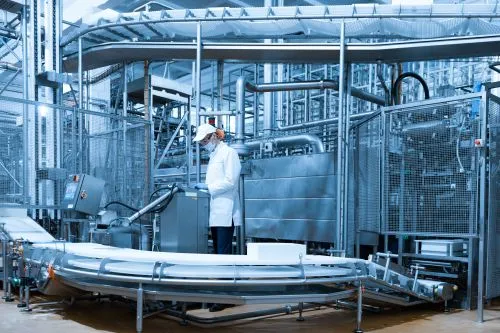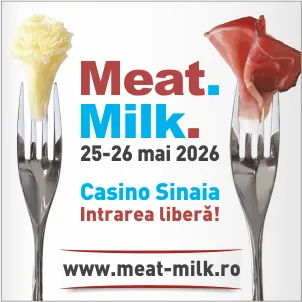
For food, the nutritional value consists of criteria for quality assessment, whose determining involves highlighting of a report of daily nutrient requirements and the intake provided by a product unit (usually 100 g). Meat, fish and the products made from these are the main sources of high quality protein. General expression of values Extensive research concluded that the oxidation of 1 g fat results 9.3 g calories, while by oxidation of 1 gram of carbohydrates or the same quantity of proteins results 4.1 calories. According to the rules prescribed by the Institute of Hygiene and Public Health, for a medium physical/ intellectual effort, the human need for calories increases if a more intensive activity is run. Thus, to express the psychosensorial value, there are known quantization methods and for graphic expression such as: scoring method, the profile method, methods that allow the comparison of food products. To calculate the energy and biological values have been developed different methods of calculation based on the following data of the product: - Fabrication recipe and efficiency per unit of product; - The chemical composition of each component of the recipe in percentages; - The caloric coefficients of the main energy substances (4.0 kcal / gram carbohydrates or proteins and 9.0 kcal / g lipid), any losses or inactivated parts in the technological process; - The daily nutrients and energy needed of the consumer group to which we refer. Calorific value represents the sum of the products resulting between energy factors and their calorific powers. The food group which includes meat and its derivatives has the following advantages: - The plastic role (complete protein); - A source of water-soluble vitamins (B1, B2, B6, B12, C, PP); - Source of iron, easily digestible; - Meat extract stimulates the secretion of digestive juices; - The fish, the primary source of fluorine and iodine; - Liver, source of vitamins. The disadvantages of the meat and its derivatives is limited, in terms of calorific value, in: - Lack carbohydrate content; - The presence of low calcium and vitamin C; - The content of cholesterol; - Are acidifying foods. The nutrients (organic and inorganic) provided to the human body, basic elements necessary to carry out metabolic processes, with different role in body are: water, lipids, carbohydrates, minerals, vitamins, enzymes, proteins. Meat and derivatives may contain (in addition to the substances needed by the body) indifferent, anti-nutritional or harmful substances. The food does not have to be the carrier of substances generated by the lack of hygiene in livestock technology, technological processing, storage, transportation, commercialization or handling. Among the main unintended changes that may occur among foods are: pollution with toxic substances (metals, preservatives, pesticides, etc.) and carcinogenic or alteration, contamination with pathogenic micro-organisms and radioactive contamination. Nutritional value referring to appropriate content and safety The proportions of food components depends on the (sub) groups of products and sometimes even from one product to another. There are few reasons for nutritional value content requires not only adequate nutrients, but also appetite and innocuity. One can say that the nutritional value of a food is determined by a number of structural elements: - The psycho-sensory value (taste and aesthetics); - Energy value; - Biological value (essential amino acids, essential fatty acids, vitamins, minerals); - Hygienic value (ratio of nutrients / random substances, absence / presence of harmful substances, impurities). Water is present in foods, determining stability and quality, shelf life, resistance to handling and transport. Water is found in food in two forms: 1. Individual water, as solutions of soluble components, in the cell juice, in the micro-and macro-capillaries. It can be removed by pushing and pressing. The water absorbed from the atmosphere (due to hygroscopicity of the products) and the water which is introduced into the technological process are also in individual forms. Between the product and the environment can be a continuous exchange of water, until is reached the equilibrium moisture content, the moment when no longer causes wetting or drying of the products. 2. Bound water enters in the structure of organic compounds; its removal is very difficult and by destroying the structures formed. If it is removed in large amounts, seriously affect the quality, causing the denaturation of proteins and loss of hydration capacity. Foods contain varying amounts of water content expressed as a percentage and referred to documents which prescribe product quality. The difference to 100% is the percentage of dry matter. If the products are kept at relative air humidity (higher or at variable temperature) it can start the activation of micro-organisms, water being an important factor for their growth. Foods with high water content are easily degradable, which is why their quality and stability can be maintained only by conservation. Minerals are essential in life. They must be purchased from food because they cannot be synthesized by the human body. Minerals act as trofin and are found in foods in varying proportions: 0.4 to 2.4%. All of the mineral elements existing in a product are called "ash". Depending on the proportion found in food, minerals are classified into: - Macro-elements: Ca, P, S, K, Na, Cl, Mg (measured in g/100 g); - Trace elements Fe, Zn, I, Mn, Mo, Se, Cu, Ba, Si, F (measured in mg/100g product); - Ultra-micro-elements: U, Ra, Th - minerals with natural radioactivity (valued at micro-gram/100g product). Calcium has as main functions: the formation and maintenance of skeletal, nerve stimulation and blood circulation. Moderate calcium deficiency causes tetany, while marked deficiencies lead to infantile rickets and osteoporosis in adults. It is found in eggs (in big quantity), in meat, fish and their derivatives. Phosphorus has the following main functions: takes part, along with calcium at the formation and maintenance of the skeleton and is involved in the formation and maintenance of nerve cells. It is found in animal products, especially in meat and egg yolk. Potassium is involved in the balance of life at the cellular level; takes part at the proper functioning of the brain and heart muscle, stimulates nerve and combat fatigue. The meat is one of the main sources of potassium, provided to the human body. Magnesium participates actively in formation of the skeleton, combat cardiopathy, increases resistance to fatigue. We find it in the composition of fish, in the liver and in the brain. Iron has the following main functions: is part of hemoglobin present in red blood cells, being the most important carrier of oxygen in the body; iron deficiency causing anemia. Among the major sources of iron include meat, egg yolk, fish and fish eggs. Iodine is an essential element for the thyroid gland to produce thyroid hormones. The main sources of iodine are: fish, mollusks and crustaceans. Lipids, whose name comes from the Greek word "Lipo" (fat) found in most foods. Among the most important sources of fat include: eggs, meat (especially the pork), pork lard. Lipids fulfill an important energy role in the body (1 gram of fat releases 9.3 kcal) and it is a form of energy storage. The glycerides stored as fat layer provide the energy needs, when the diet does not provide sufficient calories. As lipid reserves, these protect the body against cold, providing derma elasticity. In general, lipids play a plastic role, being structural constituents of the cells. Proteins are the major structural and functional components of the living cell. It is found in nature, in the animal regnum (which are prevalent) and into the plants in a smaller proportion. The most important sources of proteins are meat and eggs. They fulfill a plastic role in the body, participating in training and permanent renewal of tissues in the body. They are fundamental constituents of the cell, their energy value being 4.1 kcal / g. Vitamins are organic substances absolutely essential in life processes. They have catalytic role, being required by the body in small amounts; the human body cannot synthesize vitamins. It receives them from food as such, in the form of substances, which in the body are converted into vitamin. Classification of vitamins is done by solubility: - Fat-soluble (soluble in fat): A, D, E, K, F; - Water- Soluble (soluble in water): vitamin B complex, vitamins C, P, PP. Enzymes are organic biocatalysts produced by living cell. They catalyze reactions of synthesis and degradation from the bodies of animals, plants and microorganisms. Enzymes are classified by structure, in: Enzymes mono-components (consisting solely of protein) and enzymes bio-components, made up of a fibrous protein and non-protein component. The assimilation degree of food is determined by the quality of organic substances existing inside them and the body's ability to absorb some of these substances. Nutrients in foods are not completely assimilated by the body, but in a proportion (called "degree of assimilation"), which depends on the nature of food, on the level of technological process, on the physico- chemical properties. The degree of assimilation varies on food groups, between 70-98%. Meat and meat products have a degree of assimilation located at the limit of 95% (for proteins) and 90% (in lipids). The calorific value and the degree of assimilation The energy value of food is determined by its calorie trophines: lipids, carbohydrates, proteins. Burning in the body, they release energy to carry out vital functions. Calorie values of the coefficients are: - 9.3 kcal / g for lipids; - 4.1 kcal / g for carbohydrates; - 4.1 kcal / g for proteins. The calculation of the energy value of food is made starting from the percentage of fat, carbohydrate and proteins in food. The average consumption of calories recommended in EU countries, with climates and food culture close Romanian oscillates around 2650 kcal. In the scientific literature from the field of biochemistry and food hygiene, food technology and commodities, the nutritional value is often presented as percentage chemical composition, underlining the presence of some or other trofin, or sometimes accompanied by the potential energy expressed in kcal/100g product. The research undertaken in Romania and worldwide have allowed a new vision of nutrition, starting with the general methodology to study goods, respectively the necessity report- using value - quality. For meat, the general nutritional value of the product and its derivatives mainly comes from protein. Extracellular proteins from the connective tissue, represented by collagen and elastin, refer to lower quality protein, 3rd category protein. Increase the proportion of collagen and elastin (in old and thin animals) leads to a decrease in nutritional value because either these products are not digested, either they lack in essential amino acids. Meat, however, is low in sodium and calcium. Meat fats vary within wide limits 5-35%, depending on the species of meat. In terms of chemical composition, this fat is rich in saturated fatty acids and cholesterol, which gives to this type of fat atherogenic actions.





